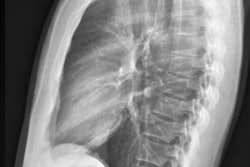
A new study from Philadelphia has proved that using an artificial intelligence (AI) system to send scheduling reminders to patients needing imaging follow-up significantly reduces compliance failure rate and potentially improves patient care and outcomes, delegates heard on November 29 at RSNA 2022 in Chicago.
The research group aimed to improve patient compliance rates for follow-up imaging recommendations by implementing a natural language processing (NLP) algorithm and tracking and reminder system that identifies patients requiring follow-up imaging based on radiology reports, organizes follow-up recommendations by due date, and reminds patients of due or overdue recommendations.
Historically, Philadelphia patients were notified of further imaging recommendations only via a letter mailed to their home, in line with Philadelphia legislation. This meant there were unknowns: Were patients actually aware of imaging recommendations and were the exams completed?
"Failure of the patient to comply results in delayed treatment, poor patient outcomes, additional unnecessary testing, lost revenue, and legal liability," noted Dr. Jung H Yun, from the department of radiology, Einstein Medical Center, Jefferson Health, Philadelphia.
With this in mind, the American College of Radiology (ACR) launched the "Closing the recommendations follow-up loop" initiative, through systemic tracking and care coordination.
Yun's group worked with Within Health to implement an NLP algorithm that automatically extracted radiology reports containing both the recommended radiologic examination and the recommended due date. The algorithm extracted patients' numbers from the patients' electronic record and sent SMS text messages. The software also included an automated tracking and reminder system that checked if patients scheduled and completed follow-ups. Patients were compliant with recommendations if exams were scheduled and completed within a period spanning 30 days before and 60 days after the recommended due date, a compliance range defined by the American College of Radiology.
Prospective analysis was performed on all outpatient diagnostic radiology reports, excluding mammograms, generated at the institution from July 1, 2021, through April 30, 2022. Inclusion criteria for outpatient radiology reports included the mention of imaging modality, body part, and due date for follow-up. Patients who unsubscribed to SMS, or who scheduled but did not complete follow-up, or whose follow-ups were not clinically indicated, were excluded.
Patients were divided into two groups, control, and intervention. In the control group there were no SMS reminder notifications until compliance date expiration date had passed. In the intervention group, the algorithm sent an initial SMS reminder three weeks after the original examination with the recommended due date for follow-up examination, then reminders every two weeks at two weeks, four weeks and six weeks after the recommended date, unless the exam had already been scheduled or completed, until the period of ACR compliance had elapsed. A final notification was sent at compliance expiry date.
The researchers then measured adherence rate in both groups and compared the two. Statistical significance was set at p = 0.05.
There were a total of 275 radiology reports, 116 in the control arm and 159 in the intervention group. In the control group, 63 (54%) patients complied with follow-up, while 53 (46%) didn't.
In the intervention group 111 (70%) patients complied with follow-up while 48 (30%) didn't. The intervention group compliance was higher than control group compliance at 70% versus 54%. Compliance rate comparison was statistically significant at p = 0.08.
The study had several limitations including small sample size at a single institution, no verification of active or inactive phones, and no further reminders if appointments were scheduled.
"As we continue to work with this AI software in the future, there are some considerations... we should communicate with patients a little earlier and send them reminders even before the start of the ACR compliance range. We also want to send more reminders even if the exams are scheduled until they are actually completed, and incorporate other modes of communication such as email and integration with the patient portal. Finally, we want to involve more patients in our study which could include inpatients and ED patients," Yun said.



















